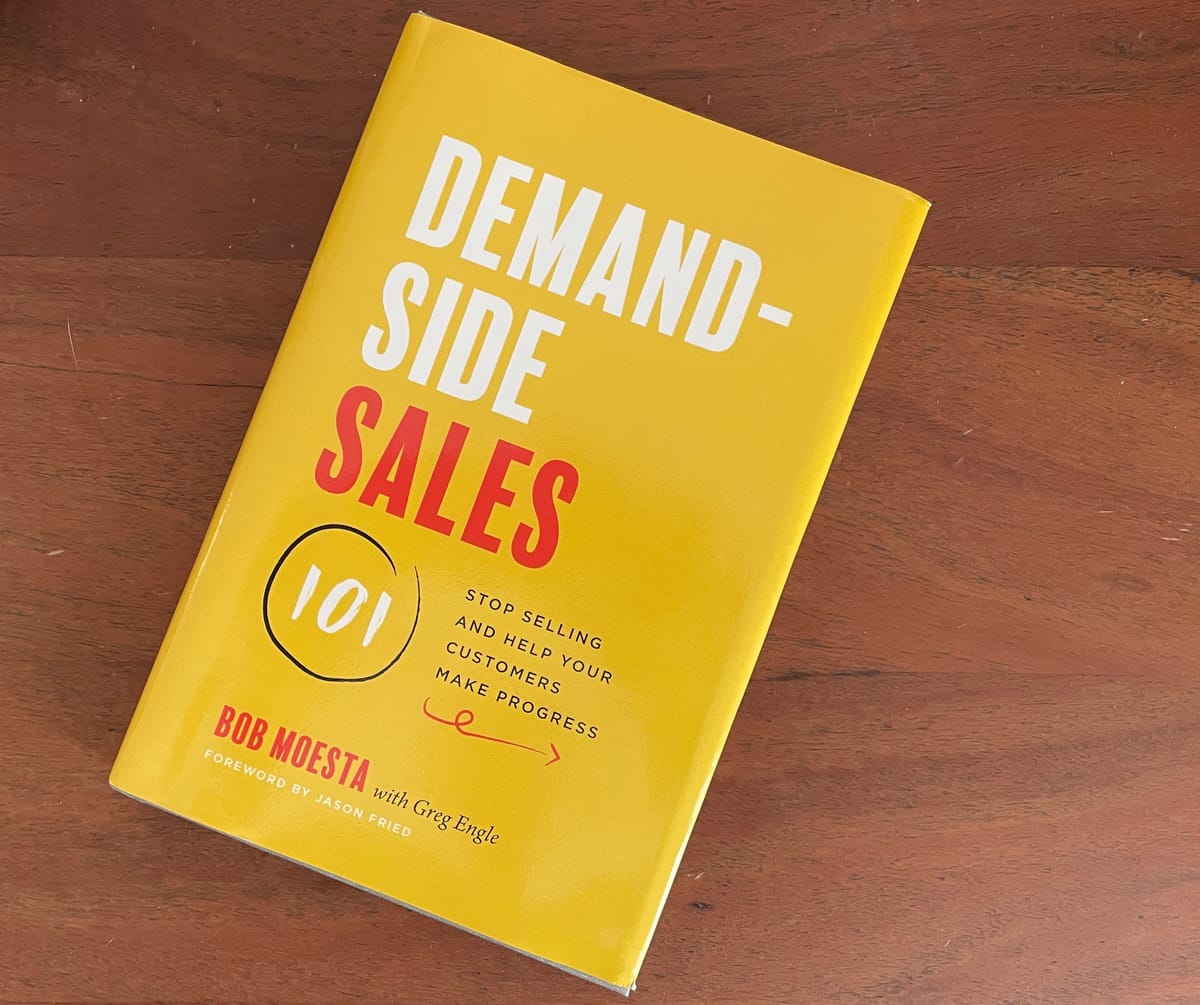Jobs to be Done
People in your company hold strong assumptions about your customers. These assumptions have supported lots of past decision-making and significant investment - in things that might not be valuable.

Context
You have a good product but are struggling to attract new customers at the rate you want to. There is finger-pointing going on between departments about demand generation. Marketing is complaining about the product. But the discussion remains in the feature space - people are asking to add features to make the product more attractive.
Play
First, get out of the building to understand the progress your customer is trying to make and the struggling moment they face. Then, reframe your product so they can see your idea for a new way.
The Jobs to Be Done (JTBD) framework was popularized by Bob Moesta in his book Demand-Side Sales: Stop Selling and Help Your Customers Make Progress.
He argues that people don't buy products; they hire products to do jobs for them. I like the book because it reframes your thinking away from selling the product you have to helping your customers solve problems. When you do this, you unlock a different kind of value - and, potentially, better pricing.
Moesta suggests looking for contrasting forces - those that promote a new choice, and those that block a change. There's the push of the situation and the pull of the new solution that help with the new choice. On the blocking side, the habits of the present and the anxiety of a new solution.
JTBD starts by interviewing people who bought your product to understand why. At Lottie, we interviewed parents who were using our learning app with their toddlers. When we dug into why one father had downloaded our app, he told us that it was all about cooking lunch. His family had just moved to a new apartment, and he was the primary person responsible for childcare. He needed 30-40 minutes to get food together without having to focus on his 4-year-old daughter during that time. He had 'hired' our app to provide some childcare support during this very important family time each day.
What was interesting for us was that this family was in a time of transition - new apartment, new role for the father, and this made him open to look for alternatives to YouTube Kids. And for him, our product's job was to be part of enabling a family meal, which we hadn't considered at all. He was clearly a conscientious parent (taking 30-40 minutes to cook) but was not interested in the detailed pedagogical benefits of our content. He wanted something 'good enough' that could enable him to create a family moment each day - a moment that came AFTER the use of our product.
Moesta suggests digging into the stages of the search process during your interviews. Find out what was their 'first thought' that got them thinking about their struggling moment. Then, how did your customer passively look for options? What event triggered them to go from a passive search to an active search? What was the event that triggered their decision? What was their buying experience like? How did they get to a successful experience with the product? You'll find these conversations are not really about product features but more about the life of the customer and their goals.
Once you understand the struggle your customers are going through, you can begin to rethink how you package your offer to better reach your customer. In the Lottie case, we realized our challenge was not to reach parents of toddlers in general, but to reach those in transition moments, like a change in childcare arrangements. These were they moments where they were establishing a new routine and most open to a product like ours.
Cautions and Caveats
Much of Demand Side Sales book is dedicated to how specifically you should interview, because it's easy to ask closed questions by mistake and simply reinforce your pre-existing assumptions about the buyer journey. Otherwise you run the risk of simply confirming your pre-existing assumptions about the journey. Remember, if your growth is not at the level you want, those assumptions aren't working for you anymore.
Many people in your company hold strong assumptions about your customers. These assumptions have supported lots of past decision-making and significant investment - in things that might not be valuable. When you starting understanding why customers buy you will discover that some things believed to be important actually played less of a role than we expected. This can be politically sensitive. If a founder's pet feature is not relevant to buying decisions, for example, that might be hard for the founder to hear.